MISSING FROM BLENHEIM PALACE ON FRIDAY, SEPTEMBER 13TH
GOLD TOILET AND GUS!!!
On Friday we went to Blenheim Palace for our third day-trip. This is going to be a two-part blog on Blenheim. First is arrival and inside the Palace, next will be the outdoor grounds! When we entered we were greeted with a giant British flag on the ground. Part of a contemporary art exhibit.
The main gate to the Palace
A monument to the First Duke of Marlborough
Ryan is holding Gus!
We entered the Palace at 10:30 am. Got our headsets for our self-guided tour. Outside the entryway in the ceiling were the 4th Duke and Dutchess's eyes!
Throughout the Palace Maurizio Cattelan, an Italian artist, had an exhibition of contemporary art. Some pieces very controversial.
In the Great Hall was We'll Never Die. It is a monumental copy of the flag-bearing arm of Emmanuel Fremiet's 1874 sculpture of Joan of Arc in Paris, leading the French army to victory against the English in 1429 during the Hundred Year's War. Joan was captured and burned at the stake by the English. Cattenlan's idea is Flags, after all, find their origin in war, and Joan's battle standard mirrors the many military flags and banners that decorate the Palace
The Great Hall ceiling depicting the Duke as a Roman God.
The first Duke's family
The Duke after winning the Battle of Blenheim against the French.
A marriage was arranged between a Duke of Marlborough and Consuelo Astor. It was arranged by her mother.
Some of the trim on the ceiling
A statue of Baccus! God of wine.
The China Ante Room
In the China Ante Room Cattelan places three horses heads in gold armor. Like Joan of Arc in the Great Hall, these works depart from the usual tradition of equestrian sculpture depicting valiant steeds ready for battle as depicted in the State Room Tapestries of the Battle of Blenheim. Cattelan's horse skulls reveal the darker sides of war such as the death and injury that befell many horses on the battlefield, innocent casualties to human desire. This also reminded me of the use of horses in WWI as examined in the play, War Horse.
The Green Drawing Room has many portraits. Cattelan again turns tradition on its head by making himself the butt of the joke. Displayed in the Green Drawing Room, he "hangs" alongside the framed portraits of the 1st Dutchess and 4th Duke of Marlborough, asking us to reflect on the ways we are used to seeing influential and powerful people represented.
The woman on the right is Sarah who is portrayed in the film, The Favorite, which explores her friendship with Queen Anne who gave her and the Duke the land for Blenheim as a reward for winning the Battle of Blenheim.
A table of the various photos of the Spencer-Churchill family.
The current Duke and Dutchess.
A photo of the artist using humor to question traditional modes of self-representation. Cattelan addresses the "celebrity" status often given to successful artists.
The Red Drawing Room.
Cattelan uses taxidermy to explore the emotional relationship and cultural associations between humans and animals. The horse, usually a symbol of strength, is here worn and tired: perhaps embodying a look back at the last century and a warning about the future. One of the tourists complained that this was gross and upsetting. At least it got a reaction!!!
Her wig is built on chicken wire and when she would ride in a coach she would have to sit on the floor so she could fit in.
Consuelo was much taller than her husband. The artist put him on a step
A couch with a built-in chaperone's seat so she or he could keep and eye on the couple.
The crank on the side of the fireplace is used to call servants.
The brown and white spaniel was breeded for Blenheim and is known as a Blenheim spaniel.
Here are two more in another painting.
The State Rooms displaying the Blenheim Tapestries.
The French General in blue surrendering to Churchill in red.
The French General about to take off his hat to surrender.
Cattelan's untitled piece originally was a black boot. Covered in gold for this exhibit. It referenced the uniforms promoted by both Italian Fascist Mussolini and Hitler. Should we worry about history repeating itself in the future.
The Saloon. This room is used for Christmas Dinner.
We is a mysterious and chilling double self-portrait of the artist, waxy-faced in dark funerary clothes and laid on a small bed, as if inviting visitors to attend his funeral wake. He presents himself laid down to be scrutinized by visitors.
The artist painted all the walls to look three dimentional.
Self-portrait of artist in the brown.
Another State Room with more military banners.
Consuleo
This note was written on the bill from a tavern or restaurant.
A copy of this French standard has to be presented to the Queen every year. If not, the Palace and land must be given back to the Royal Family.
A French cradle.
Nice mirror!
Miniature portraits.
Cattelan drops a meteor on a likeness of Pope John Paul II to suggest that even the holiest man in the Roman Catholic tradition may not be safe from misfortune. The Church like Blenheim is an institution dazed and changed by our increasingly secularized world. Blenheim is a vestige of the past, but also a national monument for Britain today.
Notice the dog in this tapestry. All the other animals in all the tapestries are horses. What is unusual about this dog?
His paws are hooves. The weavers were so used to doing hooves they didn't realize that they did the same thing with the dog. They were well into the piece and decided to leave the mistake instead of undoing it all.
A crocodile in the third State Room. The oldest known piece of taxidermy is a crocodile that has hung from the ceiling of a little church in Ponte Nossa, Italy, since the 16th century. Crocodiles were likened to dragons, as in the biblical tale of St. George making the church a fitting place to display them as captives.
French inlaid furniture.
The Long Library. A statue of Queen Anne. Her stature in the sculpture is nothing like reality. Anne was short and wide. Sarah had the sculpture done to make amends with the Queen after a falling out. She wanted to flatter her.
What is Arielle photographing?
A gorgeous ceiling.
But wait! What is sitting up there?
It is a young boy banging on a tin drum. It would periodically go off and play. This animatronic sculpture is based on the protagonist of Gunter Grass's 1959 novel The Tin Drum which tells of a boy who wills himself to stay a child as he lives through World War II. The boy's most prized possession is his drum, which he plays when he is fearful or confronted with danger. In one key episode, he disrupts a Nazi rally with the pounding rhythm. Also uses it as a warning.
The organ at the end of the Library. Notice the kneeling figure.
What seems like a young boy praying is revealed to be Hitler praying for forgiveness. Placing him in Churchill's residence is interesting. They never met face to face. Placing him in this historic setting can spark important conversations about national memory, repentance and the importance of never forgetting in order never to reproduce the mistakes of the past.
It was both pretty frightening and a surprise to see this face.
Off the Library is a Churchill exhibit. Here is his uniform and some favorite quotes.
Cattelan's Golden toilet is entitled America. This is next to the Churchill Birthroom and is a functioning toilet that visitor's can use. After we were there Friday, they had a Opening Reception for Cattelan. That night someone broke into the Palace and stole the toilet worth 4.3 million pounds. A 66 year old man was brought in for questioning. The toilet is still missing and no arrests. Was it an inside job? A publicity stunt? or a real theft? We will wait and see.
Ironically, I brought Gus, my pigeon to Blenheim, and he went missing. Did the thieves take him too? More in the next blog.
As you know Trump has a gold toilet. Did he take it so Melania can have one too? Wonder. Why is it called America? Could it be it images The American Dream: an elite object made available to all?
Churchill was painter. Here are some of his works.
The Chapel was even used by Cattelan. There are 200 taxidermy pigeons watching us. It is entitled Others. When at the Venice Biennale in 1997 it was under the name Turisti(Tourists)
Because this blog was long and took a while to do. I am doing a second part to show you all the outside grounds of the Palace. A lot of beautiful and fun things to see and do. Stay tune for Part III of Week Three. Hopefully, tomorrow or Wednesday.
Help Find Me!!!!
THAT'S ALL FOLKS!!!!!



































































































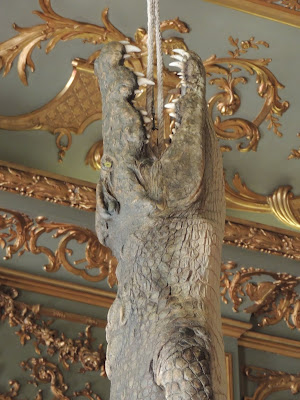



































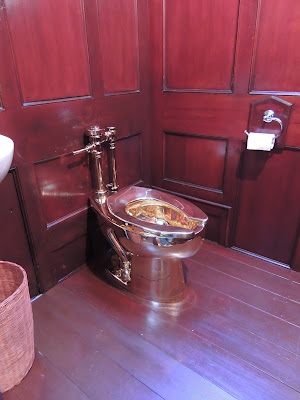







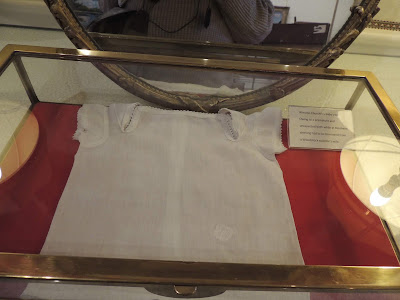




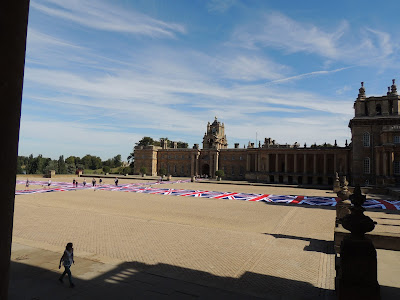
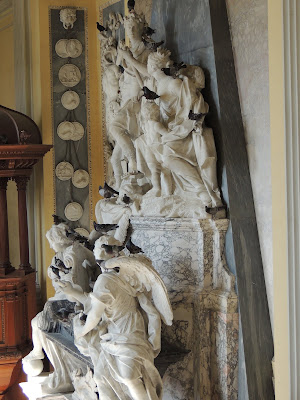







No comments:
Post a Comment